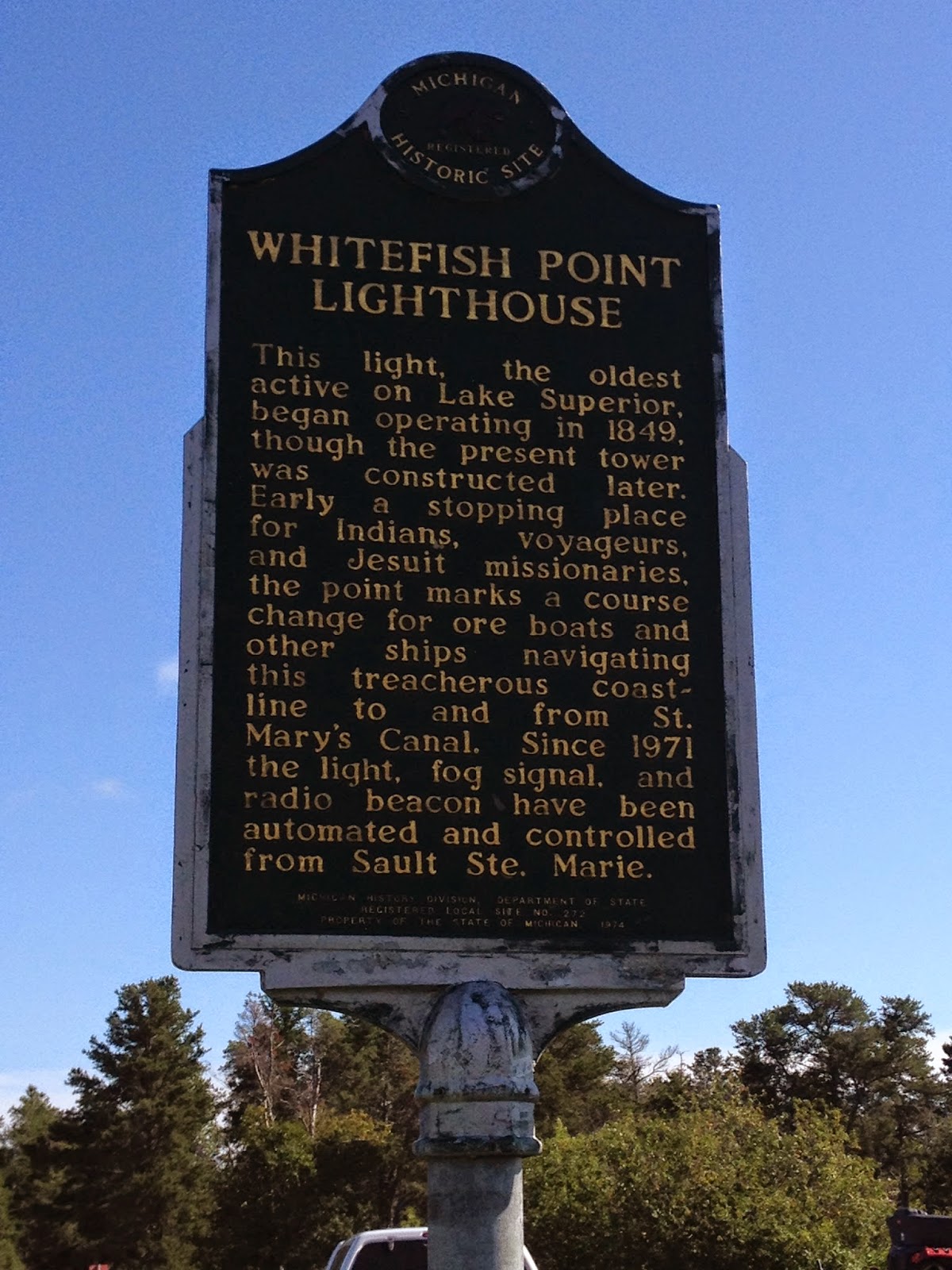Exhibits showing artifacts from the early sailing days of ships on the Lakes, as well as stories and exhibits from different types of ships that have plied their trade on the Lakes.
The ship is still reasonably intact, however it's not seaworthy. The self-guided tour leads you through all the various areas of the ship, including the engine room and it's engine that is remarkably similar to the one on display at the Maritime Museum in Manitowoc, WI.
The working conditions in the engine room were horrific:
On the lower level is a moving tribute to the Edmund Fitzgerald. With the words of Gordon Lightfoot's famous song softly playing in the background, we saw the two lifeboats from the Edmund Fitzgerald. Both were recovered within days of the tragedy, and tell a silent, but moving tale of the damage that Lake Superior wreaked on the ship. Lifeboat No. 2 is reasonably together, but has been severely damaged.
Liftboat No. 1 is torn completely in half. It is a miracle that the remains of the boat were recovered, considering it's condition. The other half of the boat has never been located.

As we were checking out topside, we noticed the freighter "Edgar B. Speer" steaming past. The ship, "upbound" as they say here, was on it's way to a port on the west side of Lake Superior, probably carrying grain or slag from the steel mills in Gary, Indiana, that will be used for roads.
We knew that the ship was heading for the Soo Locks, so we scampered down to the car (yeah, right. At our age!) and zipped up Portage St to the two story observation platform that the Army Corp of Engineers has erected directly in front of the US locks. Both "Upbound" and "Downbound" ships typically use the American locks, while recreational and smaller boats use the Canadian locks, built in the 1850's. The locks are the busiest in the nation in terms of tonnage passing through. In the center between the two sets of locks are the whitewater rapids that first prompted the installation of the locks years ago so that freight going to the frontier wouldn't have to be offloaded, carried around the rapids, and re-loaded onto ships that themselves had been portaged around the rapids.
The vertical elevation difference between Lake Superior and the St Mary's River, which forms the northern extension of Lake Huron, is 21 feet. so that's the amount that the locks need to account for. At 1,013 feet long, the Edgar B. Speer just about completely filled the lock!
It required about 90 minutes for the ship to transition the lock and begin the next leg of her journey.
It was still early in the afternoon, so we grabbed a cup of coffee at the Cup of the Day coffee shop, along with an "everything" bagel with cream cheese, and headed west. Via I75 and M29, some 60+ miles from Soo Michigan, we found the Great Lakes Shipwreck Museum. This is a non-profit, 503c organization that devotes it's efforts to locating and preserving shipwrecks in Lake Superior. At last count, some 350 sites have been located in the area off Whitefish Point, where the museum is located. Whitefish Point was a manned Coast Guard Station at one time, but is fully automated and controlled from Soo Michigan now.
The lighthouse and keepers quarters are fully open to the public and tours are provided by docents on the half hour.
The view from the lighthouse is phenomenal! The compound is laid out just as it was many years ago.
And the view down to the roof of the keeper's house is a bit scary! Congrats to Donna for making it all the way up the 86 steps!
Somewhere off there in Lake Superior, twelve miles offshore and 500 feet deep lies the Ship and the Crew of the Edmund Fitzgerald.
It had taken us about an hour and a half to drive to Whitefish Point, and another half hour to enjoy the lighthouse tour, and what did we see off in the distance? Why, it's the Edgar B. Speer!
The ship motored past, on it's way to completing a week or ten-day long journey on the "Inland Highway".
The Shipwreck Museum has a huge display of artifacts and histories from the various wrecks located by the Museum staff, but the most famous artifact is the ship's bell raised from the Edmund Fitzgerald. When the wreck was located, the decision was made by the families of the lost men that no further recovery efforts would be made.
Theories abound as to the cause of the disaster, but currently it is believed that the captain strayed a bit too close to Caribou Rock in an attempt to round Whitefish Point and reach the safety of Whitefish Bay. The storm was horrendous, with 106 mph wind, snow and rain. The light at Whitefish Point was, for some reason, not working. If the ship struck Caribou Rock, the crew might not have known it due to the high seas and violent movement of the ship. It's this violent vertical movement that doomed the ship, forcing water into ruptured holds and moving the iron ore that the ship was carrying to the bow. Off balance, the ship sank quickly by the bow; some say it would only have taken 15 seconds for the ship to go under. Surveys of the lake floor show evidence that the ship struck bow first at about 35 to 40 mph, enough to gouge a huge hole in the bottom and break the ship apart.
Never underestimate Mother Nature.






















No comments:
Post a Comment